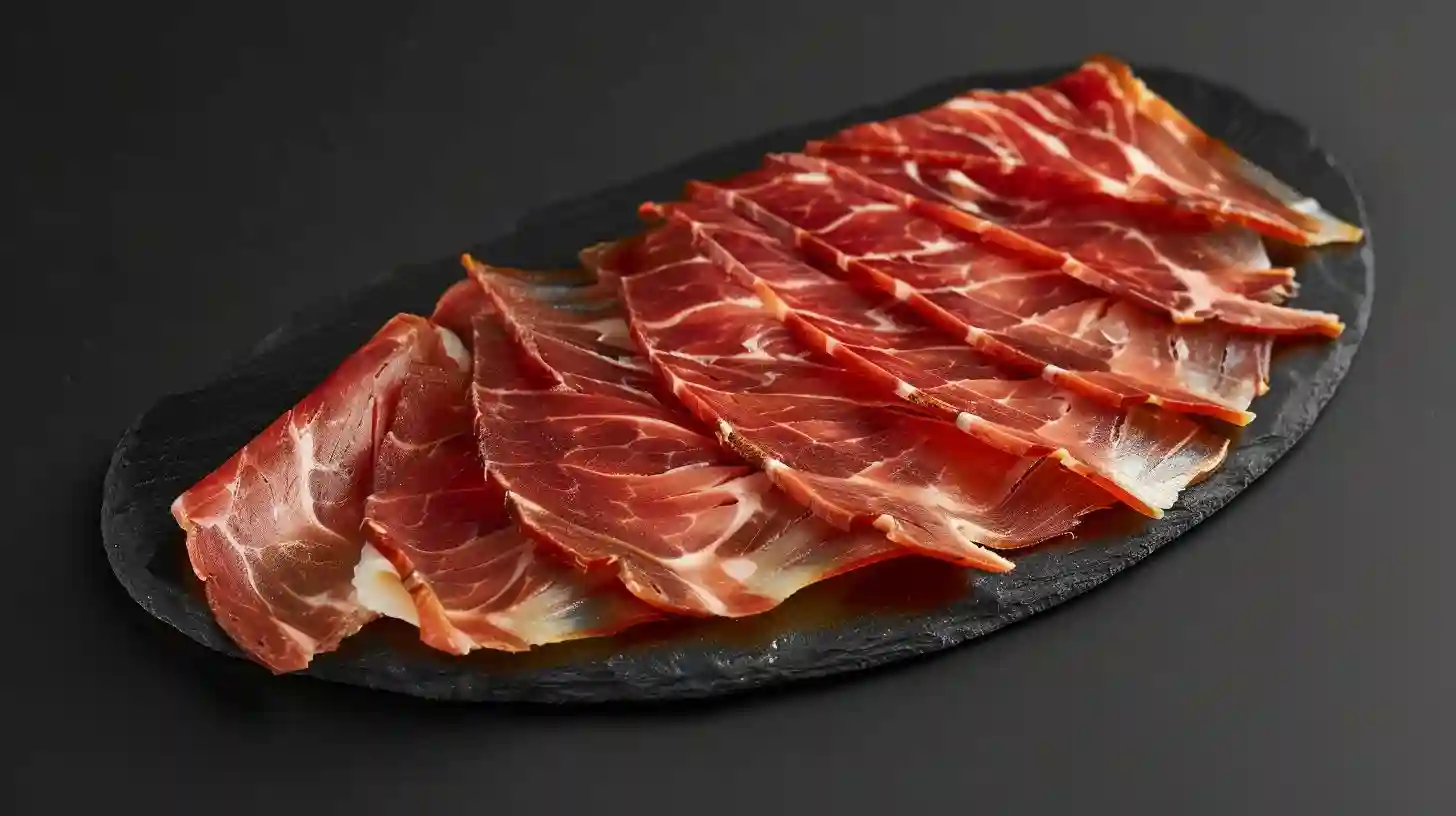
Knowledgetrovehq

Iberian ham, or Jamón Ibérico as it is known in Spanish, is a gastronomic treasure that has captivated palates both within Spain and around the globe. This exquisite culinary delight comes from the Iberian Peninsula, predominantly from Spain but also from some regions of Portugal. It is deeply rooted in the culture and traditions of the area, representing a culmination of history, natural resources, and sophisticated production techniques. The reputation of Iberian ham is built upon a foundation of meticulous breeding, feeding, and curing processes, each contributing uniquely to its distinctive flavor and texture.
The breeding of the Iberian pig, the animal from which this ham comes, is an endeavor that demands careful attention. Primarily, the Iberian pig breed is known for its unique genetic traits, especially the ability to infiltrate fat into its muscle. This marbling is critical to the ham’s tender consistency and exceptional flavor. Unlike other pigs, the Iberian pig is often allowed to roam freely in holm oak forests, known as 'dehesas', where they feast on acorns or 'bellotas'. This acorn diet is instrumental in giving Jamón Ibérico its distinctive taste, as the fats from the nuts contribute to unique aromatic qualities and nuanced flavors. The free-range lifestyle also encourages the buildup of more muscle mass, resulting in a perfect harmony of muscle and fat within the meat.
Curing Iberian ham is an art that marries ancient customs with modern precision. The painstaking process can span two to four years, and each stage is executed with exacting standards. Initially, the hams are trimmed and cleaned, and then buried in salt. This salting initiates the dehydration process, which is key for preservation and flavor development. Following the salting, the hams are washed and hung in a drying area where they gradually lose moisture. The ambient conditions, including temperature and humidity, are critical at this stage. Artisans oversee this part of the process with precision, maintaining a vigilant eye on the climatic conditions to ensure the ham matures appropriately.
Subsequent to the drying phase, the hams enter a curing period in natural cellars. This is where the magic truly happens. Over a lengthy duration, the fat infiltrates the muscle tissue, and complex chemical reactions occur, ultimately producing the unparalleled taste and texture of Iberian ham. Each type of Jamón Ibérico—be it bellota, cebo de campo, or cebo—is distinguished by variations in the pig’s diet and the length of the curing process. Bellota hams are the most prestigious and come from pigs that have primarily consumed acorns, while cebo de campo and cebo grades are respectively less distinguished by having a mix of acorns and other feeds, or purely non-acorn feeds. These distinctions are meticulously regulated to preserve authenticity and quality.
Renowned chefs and epicureans across the globe revere Iberian ham for its intricate flavor profile and versatility. A single taste can reveal myriad flavors, from nutty and sweet to deep umami and even faintly floral undertones. The experience of savoring Jamón Ibérico is almost ritualistic; thin slices are typically cut from the ham with a special long, flexible knife to ensure each piece is delicate and uniform. This method of slicing is not merely for aesthetics but also for maximizing the culinary experience by ensuring the perfect balance of fat and lean meat in every bite.
Pairings and presentations of Iberian ham are also part of its gastronomic allure. Often served on its own with a glass of fine wine, it can equally enhance various dishes, from simple tapas to complex gourmet creations. It can be married with an array of accompaniments like Manchego cheese, figs, or almonds, each pairing introducing new dimensions to its taste. Wine pairings can range from robust reds to dry sherries, each adding their own layers of complexity and enjoyment.
In Spain, the reverence for Iberian ham is palpable and tangible. Festivals celebrate its presence, and it plays a pivotal role in social gatherings, special occasions, and traditional feasts. The Spanish notion of 'sobremesa', the time spent lingering at the table after a meal, is often enriched by conversations over delectable slices of Jamón Ibérico. This ham is not just food; it is an integral aspect of Spanish heritage. The traditions surrounding it are passed down through generations, maintaining a deep connection to the past while continually evolving.
Understanding the cultural and economic significance of Iberian ham expands beyond its immediate pleasure to the taste buds. It supports rural economies and sustains agricultural traditions that are centuries old. The preservation of dehesas, where the Iberian pigs graze, has profound ecological importance as well. These vast grazing lands are biodiversity hotspots and play a pivotal role in the conservation of various plant and animal species.
Iberian ham transcends being a mere food item; it is a manifestation of cultural heritage, sensual pleasure, and ecological awareness. Its production requires a confluence of meticulous animal husbandry, sophisticated curing techniques, and profound respect for natural rhythms. Enjoying a slice of Jamón Ibérico is to partake in a rich tapestry of history, tradition, and an unyielding quest for culinary excellence. Each bite reveals a saga—a story that began in the lush acorn-filled dehesas and culminates in an enduring legacy of taste that has captured and continues to captivate the hearts of epicureans worldwide.